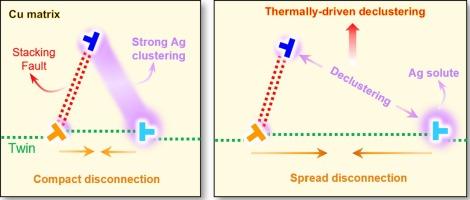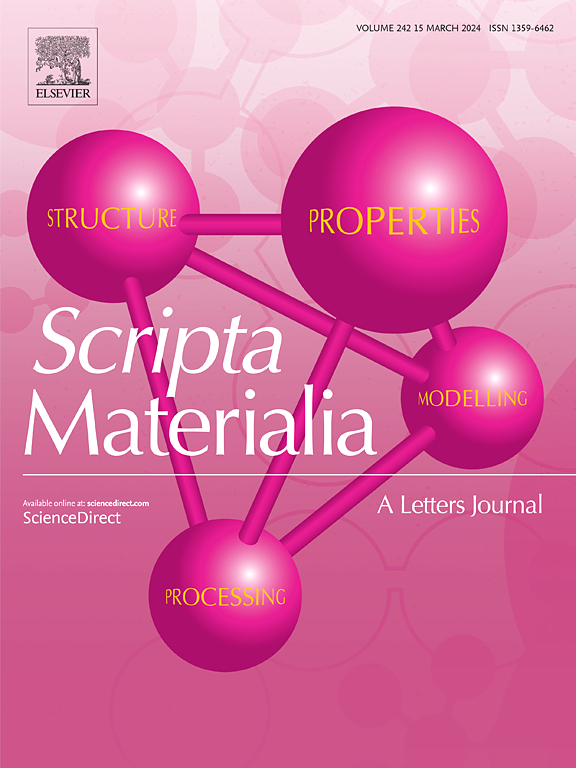结构依赖的聚类到聚类的溶质偏析转变
IF 5.6
2区 材料科学
Q2 MATERIALS SCIENCE, MULTIDISCIPLINARY
引用次数: 0
摘要
晶界断裂是一种普遍存在的界面缺陷,对纳米晶合金的性能起着至关重要的控制作用,其特征是台阶和位错。虽然合金元素的偏析经常在GB断路中观察到,但其潜在的机制仍然知之甚少,特别是在高温和非稀释条件下。在这项研究中,我们采用原子模拟来研究银在铜作为模型材料系统的各种故障断开处的偏析行为。我们的研究结果表明,尺寸和致密性对偏析行为有明显的影响:由于高度局域化的拉伸场,更致密的断裂断裂结构促进银偏析团簇的形成,而更广泛的断裂断裂结构(即更宽的局部位错间距)表现出更弱的聚类倾向。随着温度的升高,Ag在小断裂中的聚类先增强后消失,表明由热驱动的聚类向非聚类偏析行为转变。本文章由计算机程序翻译,如有差异,请以英文原文为准。

Structure-dependent clustering-to-declustering solute segregation transitions near disconnections
Grain-boundary disconnections, characterized by a step and a dislocation, are pervasive interfacial line defects that play a critical role in governing the properties and performance of nanocrystalline alloys. Although segregation of alloying elements is frequently observed at GB disconnections, the underlying mechanisms remain poorly understood, particularly at elevated temperatures and non-dilute conditions. In this study, we employ atomistic simulations to study the segregation behavior of Ag at various faulted disconnections in Cu as a model material system. Our results demonstrate a pronounced size and compactness effect on the segregation behavior: more compact faulted disconnection structures promote the formation of Ag segregation clusters due to a highly localized tensile field, whereas more spread faulted disconnection structures (i.e., with wider partial dislocation spacing) exhibit much weaker clustering tendencies. With increasing temperature, Ag clustering in small disconnections initially intensifies and then disappears, indicating a thermally driven transition from clustering to declustering segregation behavior.
求助全文
通过发布文献求助,成功后即可免费获取论文全文。
去求助
来源期刊

Scripta Materialia
工程技术-材料科学:综合
CiteScore
11.40
自引率
5.00%
发文量
581
审稿时长
34 days
期刊介绍:
Scripta Materialia is a LETTERS journal of Acta Materialia, providing a forum for the rapid publication of short communications on the relationship between the structure and the properties of inorganic materials. The emphasis is on originality rather than incremental research. Short reports on the development of materials with novel or substantially improved properties are also welcomed. Emphasis is on either the functional or mechanical behavior of metals, ceramics and semiconductors at all length scales.
 求助内容:
求助内容: 应助结果提醒方式:
应助结果提醒方式:


